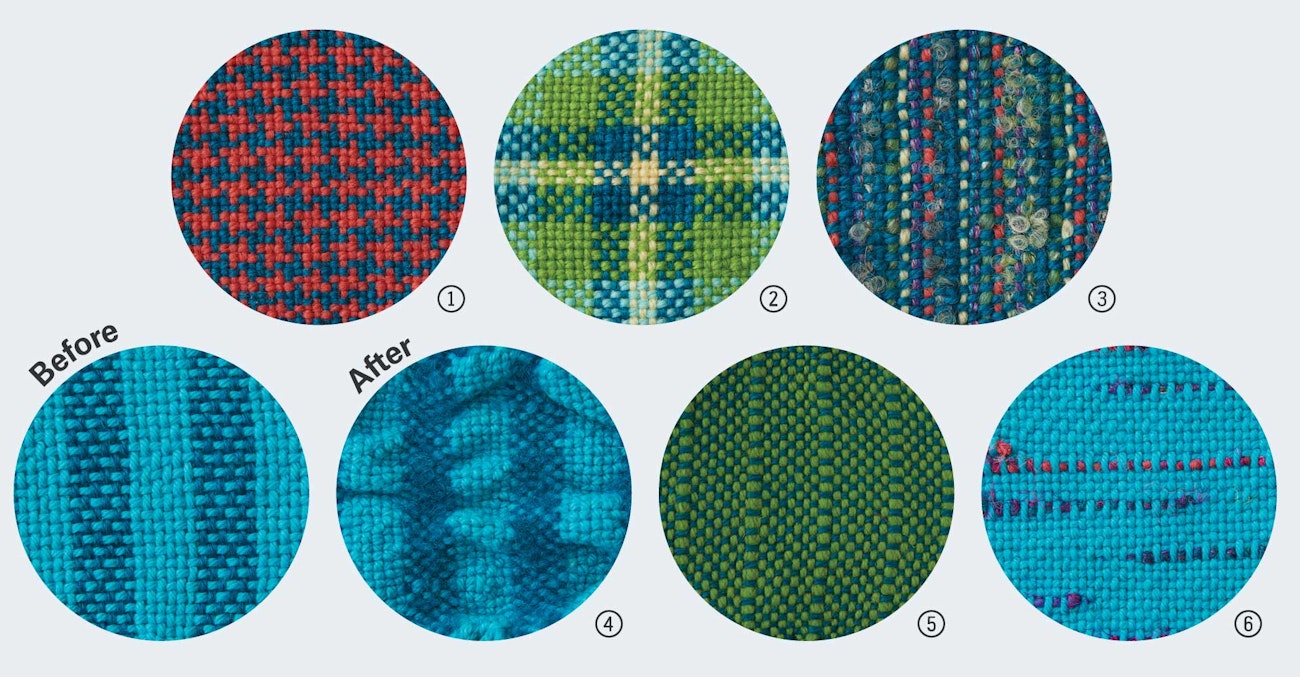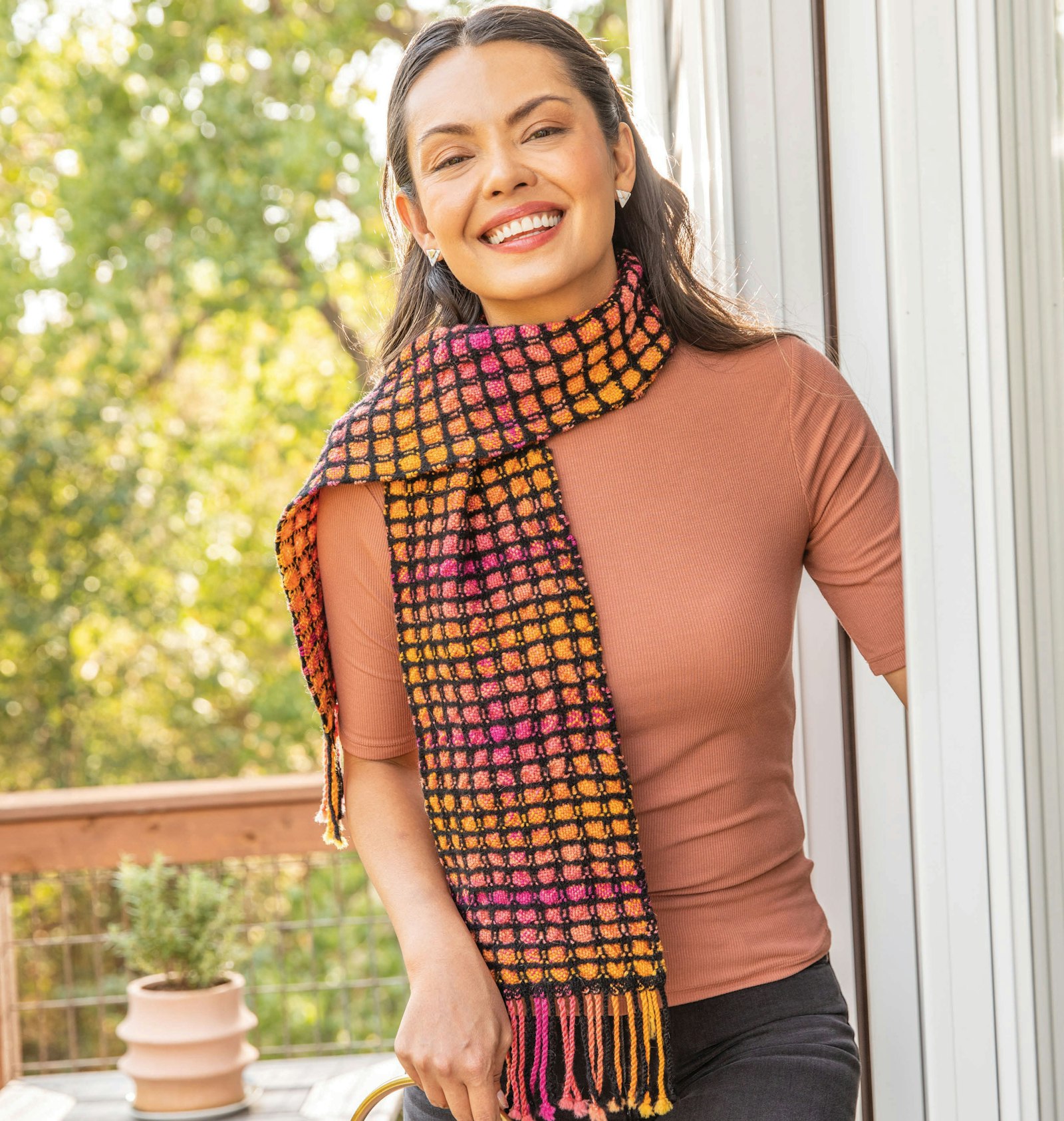"Plain weave" can sound so drab and unexciting, but there’s plenty you can do with this most basic of weave structures; whether it’s color, texture, or both. If you this post, you've already explored color-and-weave. Now, that post only scratched the surface of ways to take plain weave to new heights, so here are even more ideas for designing plain weave that’s out of the ordinary.

1. Houndstooth
The most basic pattern of a class called color-and-weave, houndstooth alternates two colors in warp and weft. The classic square/star motif is thanks to the way the warp and weft threads cover and reveal each other. Tip: Start one color weft on each side, and catch the unused weft whenever possible.
2. Plaid
A plaid is a color pattern that’s mirrored in both warp and weft to create grids and blocks of different colors. It requires some advanced planning (and creates a lot of ends to be woven in), but the effect is spectacular. Search the web for your favorite plaid or use tartan pattern generator.
3. Mixed Warp
There’s no rule that you have to use all the same yarn in the warp; changing colors and textures can give striking effects (and it’s a great way to use up leftover yarns). Weaving teacher Judy Steinkoenig suggests staying within one fiber family—using either all animal protein or all plant fiber—to keep the tension even. Keep any rough-textured yarns near the center of the warp to avoid abrading them on the heddles.
4. Differential Shrinkage
This is a fancy way to describe using two different yarns, one that shrinks and one that doesn’t, and deliberately washing the fabric in a way that will make one shrink. The resulting puckering adds a three-dimensional element to the fabric. You can mix the yarns in the warp (seen here), weft, or both.
5. Crammed & Spaced Warp
Putting more ends than usual in some of the slots or holes creates a ridge in the warp, giving a bit of texture with no extra effort. Just pass another loop or pair of ends (or more) along with the regular warp thread and tie on as usual. Similarly, put fewer ends than usual in some of the other slots to create areas of lace.
6. Simple Inlay
This is cheating a little bit, because it involves doing something with your weft besides simple back-and-forth passes, but adding an extra section of yarn in the weft can create both color and texture. Choose a yarn in a color and yarn diameter that will pop, cut random lengths, and tuck it inside the shed in random places, aiming for a balanced effect overall. After washing, trim the ends of the inlay close to the fabric.
Enjoy even more inspiration and colorful projects from the 2016 issue of Little Looms.
Yarns shown above: Houndstooth, plaid, crammed warp: Brown Sheep NatureSpun Sport. Differential shrinkage: Brown Sheep NatureSpun Sport, Cascade Yarns Sunseeker Shade. Mixed warp: Brown Sheep NatureSpun Sport, JaggerSpun Zephyr Lace, Plymouth Mushishi, Tahki Yarns Tara Tweed, Lana Grossa Bombolino. Simple inlay: Cascade Yarns Sunseeker Shade, Treenway Silks Recycled Silk.
Originally published 2/15/22; updated 8/13/2024

